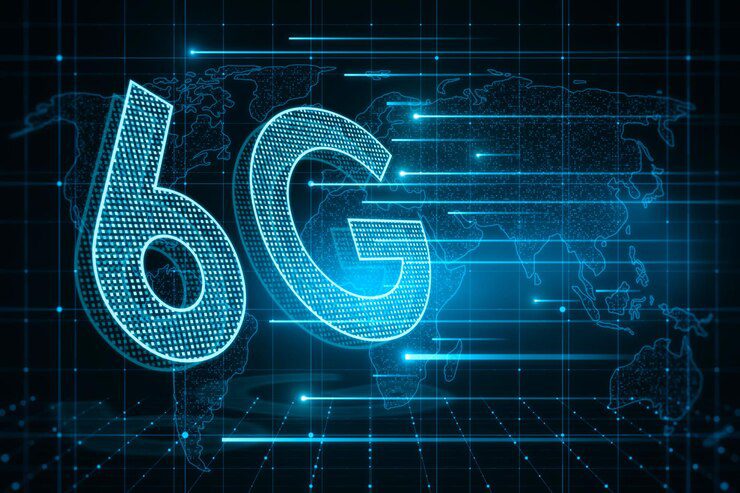In recent years, we’ve witnessed a rapid shift from 3G to 4G and now to 5G networks. However, the world of mobile technology is already looking beyond 5G, and the next big thing is 6G technology. With 6G, we can expect faster and more reliable connections, lower latency, and the potential for revolutionary technological advancements. In this article, we’ll dive into the world of 6G technology, exploring what it is, how it works, and what we can expect from this exciting new technology.
What is 6G Technology?
6G technology refers to the next generation of mobile networks that will succeed 5G technology. It is expected to be even faster, more reliable, and efficient than 5G technology. 6G will be able to support even more connected devices, provide lower latency, and be more resilient to network congestion. The technology is still in its early stages, and it is expected to be commercially available around 2030.
The Evolution of Mobile Technology
From 1G to 5G: A Brief Overview
The first generation of mobile networks, 1G, was introduced in the early 1980s. 1G was analog, which meant that it had poor voice quality and was prone to interference. The second generation of mobile networks, 2G, was introduced in the early 1990s. 2G was digital, which meant that it had better voice quality and was more secure than 1G.
The third generation of mobile networks, 3G, was introduced in the early 2000s. 3G was the first mobile network to provide high-speed data services, enabling the use of the internet on mobile devices. The fourth generation of mobile networks, 4G, was introduced in the early 2010s. 4G was a significant improvement over 3G, offering faster download and upload speeds, lower latency, and better network capacity.
What is 5G Technology?
5G technology is the fifth generation of mobile networks, and it was commercially launched in 2019. 5G is a significant improvement over 4G, offering faster speeds, lower latency, and greater network capacity. 5G technology uses millimeter-wave frequencies, which are higher than the frequencies used in previous generations of mobile networks.
What are the Limitations of 5G Technology?
Despite the many benefits of 5G technology, there are also some limitations to consider. One of the biggest challenges facing 5G is the limited range of millimeter-wave frequencies. 5G signals are easily blocked by buildings and other obstacles, which can limit their range and effectiveness. Additionally, 5G technology requires a significant amount of infrastructure and investment to implement, which can make it difficult for some countries to adopt.
The Potential of 6G Technology
The Need for 6G Technology
As the world becomes increasingly connected, there is a growing need for mobile networks that can support even more devices and provide even faster and more reliable connections. 6G technology will be critical for supporting the Internet of Things (IoT), autonomous vehicles, and other emerging technologies that require low-latency, high-bandwidth connections.
The Promises of 6G Technology
6G technology promises to revolutionize the way we connect and communicate with each other. It will enable faster download and upload speeds, lower latency, and greater network capacity than ever before. 6G will also provide more reliable and secure connections, with better coverage in remote and hard-to-reach areas.
How Does 6G Technology Work?
Frequency Spectrum and Terahertz Waves
6G technology will use even higher frequencies than 5G technology, including terahertz waves. These high-frequency waves have shorter wavelengths than the radio waves used in previous generations of mobile networks, which means they can carry more data and provide faster connections.
Intelligent Networks and Artificial Intelligence
6G technology will also incorporate intelligent networks and artificial intelligence (AI) to improve network efficiency and reliability. AI algorithms will be used to optimize network resources and reduce energy consumption, while intelligent networks will be able to adapt to changing network conditions in real-time.
Advancements in Hardware and Software
Advancements in hardware and software will also play a crucial role in the development of 6G technology. New materials, such as graphene, will be used to create faster and more efficient transistors, while software-defined networking (SDN) and network function virtualization (NFV) will enable more flexible and scalable networks.
Applications of 6G Technology
Healthcare and Medicine
6G technology will have a significant impact on healthcare and medicine, enabling remote patient monitoring, telemedicine, and other emerging applications. With 6G, doctors and healthcare professionals will be able to provide real-time diagnoses and treatments, regardless of where the patient is located.
Autonomous Vehicles
Autonomous vehicles will rely heavily on 6G technology to communicate with other vehicles, pedestrians, and infrastructure. 6G will enable ultra-low-latency connections, which will be critical for ensuring the safety and reliability of autonomous vehicles.
Education and Entertainment
6G technology will also have a significant impact on education and entertainment, enabling immersive virtual and augmented reality experiences. With 6G, students and learners will be able to connect with each other and with educational resources in real-time, regardless of where they are located.
Smart Cities
6G technology will be critical for the development of smart cities, enabling more efficient and sustainable urban environments. With 6G, cities will be able to optimize traffic flows, reduce energy consumption, and improve public safety and security.
Challenges Facing 6G Technology
Technical Challenges
There are several technical challenges that 6G technology faces, including the need for more efficient hardware and software, as well as the development of new materials and manufacturing processes. Additionally, there are challenges related to the use of terahertz frequencies, including the need for new antenna designs and the potential for interference from other sources.
Regulatory and Policy Challenges
Another challenge facing 6G technology is the need for regulatory and policy frameworks that can support its development and deployment. This includes the allocation of new frequency bands and the development of standards for interoperability and security.
Economic and Social Challenges
Finally, there are economic and social challenges associated with the development of 6G technology. This includes the need for significant investment in infrastructure and research, as well as concerns related to privacy and security in a more connected world.
Conclusion
In conclusion, 6G technology is the next step in the evolution of mobile networks, promising faster and more reliable connections, lower latency, and greater network capacity. While there are still many technical, regulatory, and economic challenges to overcome, the potential benefits of 6G technology are significant, and it is likely to play a critical role in the development of emerging technologies and applications.
FAQs
When will 6G technology be available?
It is expected that 6G technology will be available commercially around 2030.
How fast will 6G technology be?
6G technology is expected to provide data speeds of up to 1 terabyte per second, which is 100 times faster than 5G technology.
What is the role of AI in 6G technology?
AI will play a crucial role in the development of 6G technology, enabling intelligent networks that can adapt to changing network conditions in real-time.
What are some of the challenges facing the development of 6G technology?
Some of the challenges facing 6G technology include the need for more efficient hardware and software, regulatory and policy frameworks, and significant investment in infrastructure and research.
How will 6G technology impact healthcare and medicine?
6G technology is expected to have a significant impact on healthcare and medicine, enabling remote patient monitoring, telemedicine, and real-time diagnoses and treatments.



